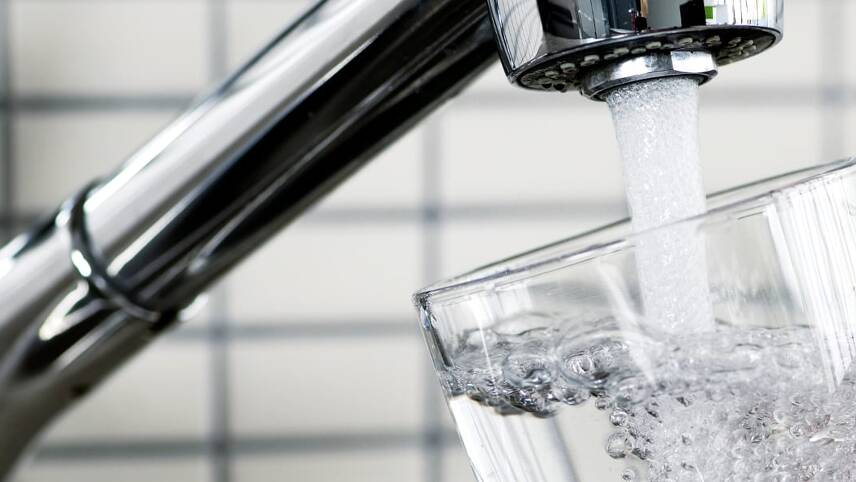Member only content free until 26/05/2024
To continue reading this article and enjoying free access to all Utility Week’s content up to the 26/05/2024 Register today!
Ready to become a member?

The need to address the growing challenge of storm overflow discharges is escalating. Last year, the UK government committed funding towards a reduction programme that many activists see to not go far enough to combat the scale of the challenge at hand. Writing for Utility Week, Mark Smith, head of water at RSK Group, argues that what we need first is a rethink on our relationship with water as a resource, not just the overflows.
In August 2022, the UK government passed the storm overflows discharge reduction plan with the ambition of confronting the increasing levels of pollution in our national waterways as a result of sewer network discharges. The policy allocated £56 billion towards a reduction programme, but many campaigners, such as Surfers Against Sewage and the Rivers Trust, see this as too little too late in tackling the magnitude of the challenge. Currently, across the country, there are 22,000 combined storm overflows (CSO) in operation. Their exact locations and rates of discharge, however, are unknown.
The current policy offers measures to stop the situation from getting worse, with the funding going towards identifying and monitoring the most polluting overflows so that they can be removed. This will likely represent a 10–15% reduction in the number of overflow points across the network. When the consultation on this policy was announced in early 2022, there was the hope throughout the industry that it would be a seminal regulatory change – the moment of significant progress towards the total removal of combined storm overflows. The challenge we are faced with here is so big that it requires significant funding and vision to overcome. Our answer doesn’t lie in one neat solution. 
What we need is to completely rethink water.
That is, water as a whole, not separated out into storm water, tap water and wastewater. Water as a resource needs a rethink, and how we use and talk about it needs to reflect what it is we want to achieve. If we do not know where we are heading, we can’t plan how to get there.
This is particularly important when we consider that the real challenge we face isn’t a question of sufficient supply – we are lucky in the UK that we are not significantly threatened by scarcity – but a question of ecological health. Our waterways are in poor health in all areas of the country: all fail to meet chemical standards, and only 14% are considered to be in good ecological condition. Our rivers and chalk streams have been ignored in the debate. Now we need to open up the conversation around the provisions to protect our estuaries, coastlines and streams.
The question of planning and management is a significant one for the sector – there are many areas in which we do not fully comprehend the impact that our activities are having. Do we have a firm understanding of the effect of discharges on protected environments? Do we have a great enough appreciation of how to prevent damage to, and build ups in, our sewer networks? Do we know how to enact positive change to protect our estuaries, coasts and rivers?
So how do we get to that point at which we do understand these issues and develop that much-needed sense of direction? This is only going to become more important as we experience increasingly unpredictable rain patterns – in the UK this year, we have seen extended periods of dry weather and much heavier instances of localised rain, with July being one of the wettest on record.
We must find a way to engage society in the key decisions on how and where we invest in water infrastructure because, at its core, the challenge we face is about how we operate and interact with water. It is something we all have a stake in.
In legislative terms, policy needs to become the long-term driver to improve conditions – the vehicle that supports our collective ambition. Success here, in many ways, isn’t just about committing funds towards positive initiatives that will support good ecological practice; it’s also about education. We need to make sure we understand what better looks like, what can be done to achieve it and what measures we take on a daily basis to support these wider efforts. We all have a role to play there, such as ensuring that wet wipes are not flushed and cooking oil is not poured down sinks and drains. These day-to-day efforts make a difference.
More broadly, actions such as setting a national per capita consumption target at around 100 litres per day, combined with metering programmes for all properties, would take us towards reducing our water use. Consumption hasn’t changed much over the past 20 years, but we do need to see a reduction of around 25% to ensure resilient supplies. In tandem with this, developing a national leakage reduction strategy that requires both company and customer investment would further prevent losses, especially so if greater investment is given to national critical infrastructure to protect its resilience and integrity.
As we consider our relationship with water, it is pivotal we find a way to measure the scale of the challenge we face. Without measuring it, we can’t find a way to manage it. Ultimately, however, we must zoom out before we zoom in if we are to find solutions.




Please login or Register to leave a comment.